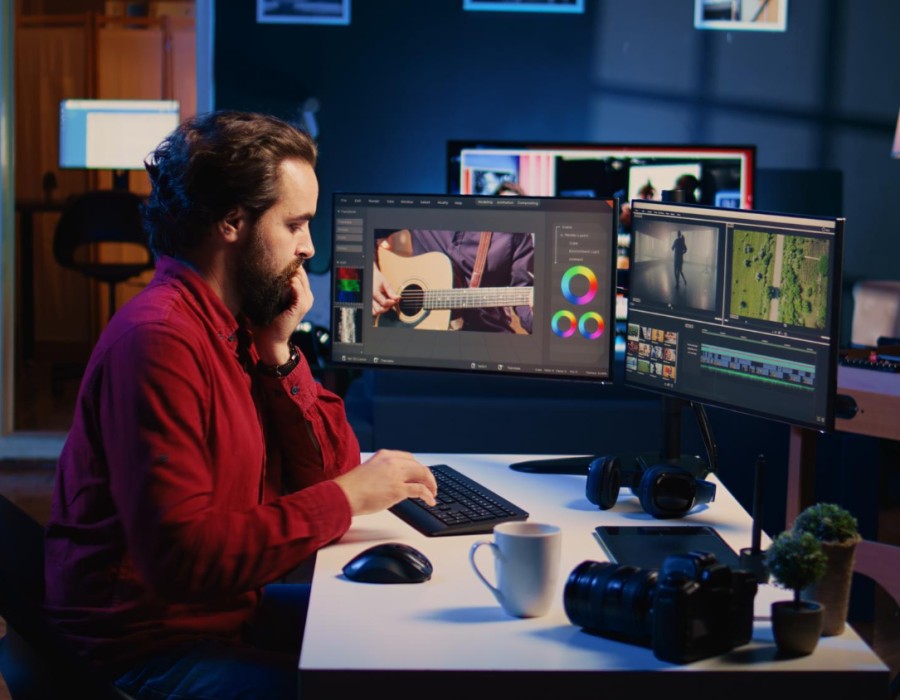In today's digital age, video has become a powerful tool for education. With the right editing techniques, raw footage can be transformed into engaging and effective educational videos that captivate students and enhance learning. Whether you're an educator creating content for a classroom or an instructional designer developing materials for an online course, understanding the process of video editing is crucial. This article explores how educational video editing services can take raw footage and turn it into polished, impactful educational videos.
1. Planning and Preparation
Before diving into the editing process, proper planning is essential. This starts with defining the objectives of your educational video. What are the key concepts you want to convey? Who is your target audience? Understanding these factors will guide your editing decisions and ensure that the final product meets educational goals.
Script and Storyboard: A well-crafted script and storyboard are foundational to a successful educational video. The script outlines the content and dialogue, while the storyboard visualizes
the sequence of shots and scenes. Both tools help in organizing the raw footage and ensuring a coherent flow of information.
Gathering Raw Footage: Collect high-quality footage relevant to your educational topic. This can include lectures, demonstrations, interviews, or animations. Ensure that the footage is clear, well-lit, and free of distracting background noise. The quality of your raw footage will directly impact the effectiveness of your final video.
2. Editing Basics
Once you have your raw footage, the editing process begins. Here are some fundamental steps to transform your footage into an educational masterpiece:
1. Import and Organize: Start by importing your footage into a video editing software. Organize your clips into bins or folders based on content categories. This makes it easier to locate and use specific segments during editing.
2. Trim and Cut: Begin by trimming unnecessary sections and cutting out any errors or distractions. Focus on keeping content relevant to the educational objectives. Remove any long pauses, off-topic remarks, or redundant information to maintain viewer engagement.
3. Assemble the Timeline: Arrange your clips according to the storyboard or script. Ensure a logical flow of information that builds on previous content. Use transitions to smoothly move from one segment to the next, but avoid overusing them as they can be distracting.
3. Enhancing Educational Value
To make your video more effective as an educational tool, consider the following enhancements:
1. Add Visual Aids: Incorporate visual aids such as graphics, charts, and images to reinforce key concepts. Visual aids can help in explaining complex ideas and making the content more memorable.
2. Insert Text and Titles: Use text overlays and titles to emphasize important points and provide additional explanations. This is particularly useful for highlighting definitions, summarizing key takeaways, or introducing new sections.
3. Incorporate Animation and Effects: Animations and special effects can make learning more engaging. For instance, animated diagrams can illustrate processes or concepts in a dynamic way. However, use these elements judiciously to avoid overwhelming the viewer.
4. Add Narration or Voiceover: A clear and well-paced narration can guide viewers through the content and clarify complex points. Ensure that the voiceover is professionally recorded with good audio quality. Use a tone that matches the educational content and maintains viewer interest.
5. Include Background Music: Background music can set the tone and enhance the overall viewing experience. Choose music that complements the content without overpowering the narration. Ensure that the music is royalty-free or properly licensed.
4. Polishing the Final Product
After making initial edits, it’s time to refine and polish your video:
1. Review and Revise: Watch the video multiple times to identify any areas that need improvement. Check for consistency in tone, pacing, and content accuracy. Revise any sections that may be unclear or redundant.
2. Check for Technical Issues: Ensure that the video is free from technical issues such as audio syncing problems, color inconsistencies, or video glitches. High production values contribute to a professional and credible educational video.
3. Seek Feedback: Before finalizing the video, seek feedback from peers or educators. They can provide valuable insights into the clarity and effectiveness of the content. Use their feedback
to make any necessary adjustments.
4. Export and Format: Export the video in a format suitable for your intended platform. Consider the resolution, file size, and compatibility with various devices. Ensure that the video is accessible and easy to view on different screens.
5. Distribution and Engagement
Once your educational video is complete, it’s time to share it with your audience:
1. Choose the Right Platform: Depending on your target audience, select the appropriate platform for distribution. This could be a learning management system (LMS), educational website, or social media channels.
2. Promote Your Video: Use promotional strategies to increase visibility and engagement. Share the video through email newsletters, social media posts, or educational forums. Encourage viewers to interact with the content and provide feedback.
3. Monitor and Evaluate: Track the performance of your video by monitoring metrics such as view counts, engagement rates, and viewer feedback. Use this data to assess the effectiveness of your video and make improvements for future projects.
Conclusion
Transforming raw footage into effective educational videos involves a combination of careful planning, skilled editing, and thoughtful enhancements. By integrating video editing services, you can elevate your educational content to be not only informative but also engaging and visually appealing. By following these steps, you ensure that the video enhances the learning experience, making complex concepts easier to grasp. With attention to detail and consistent practice, your raw footage can be transformed into impactful educational tools that deeply resonate with your audience.





Comments